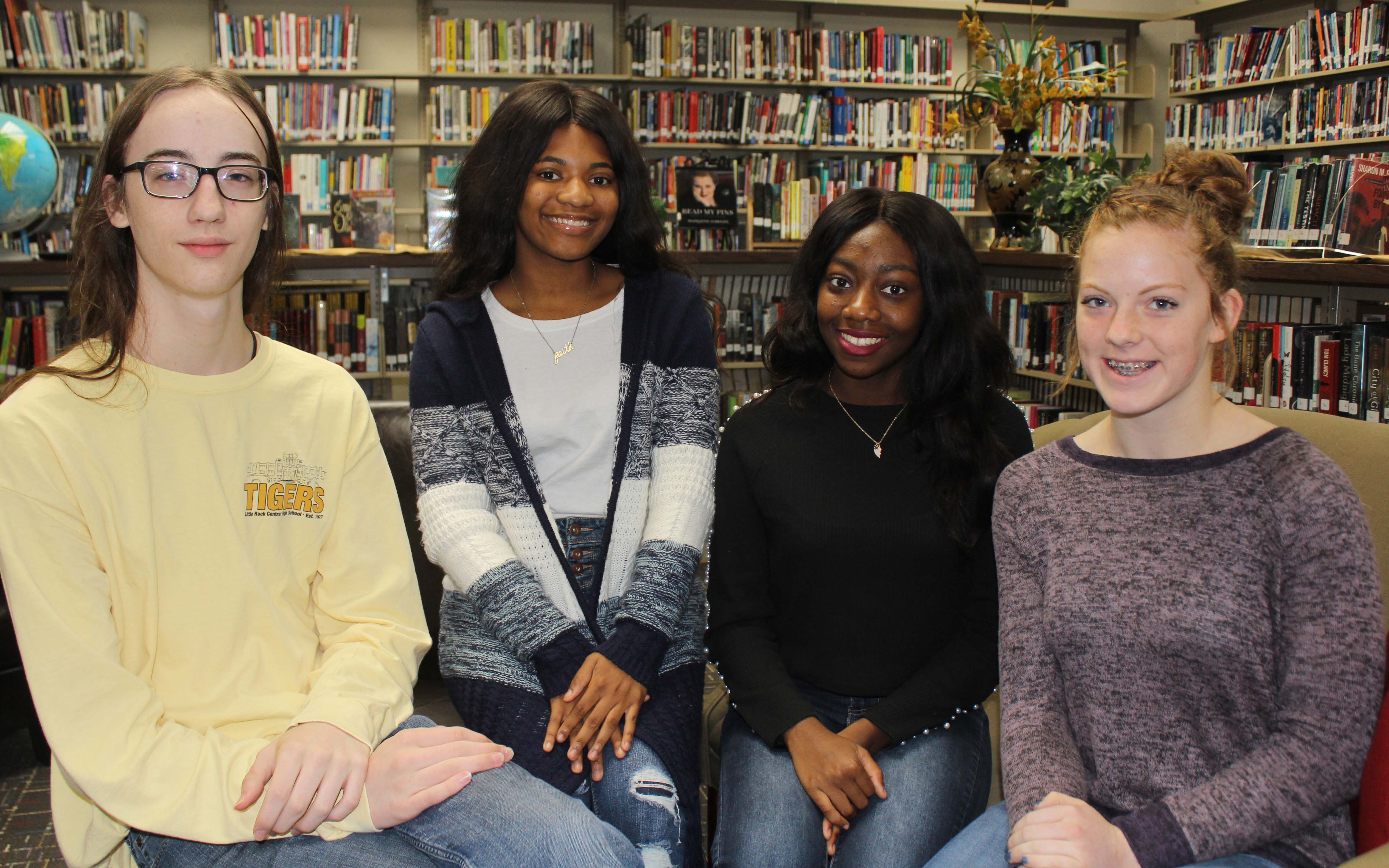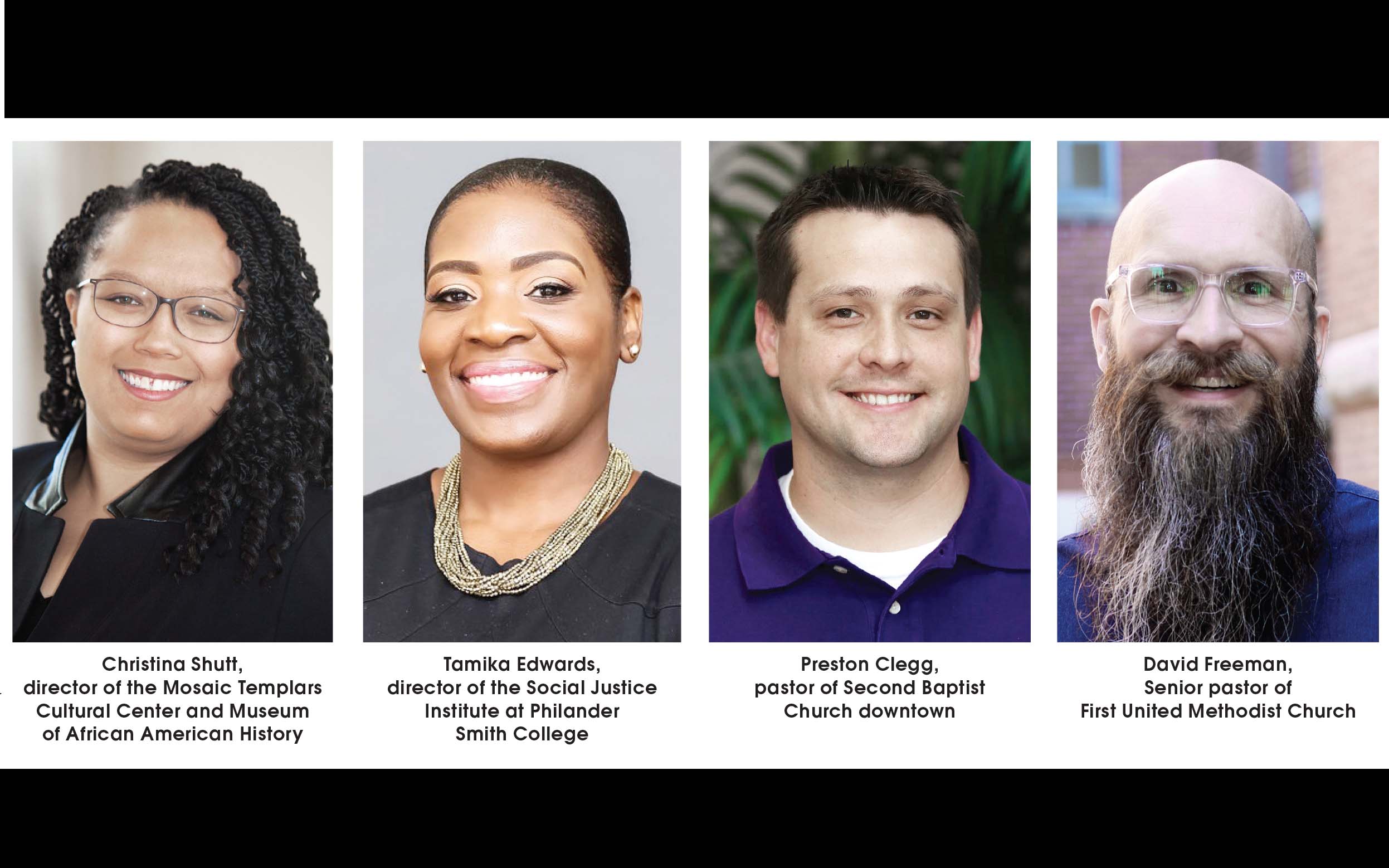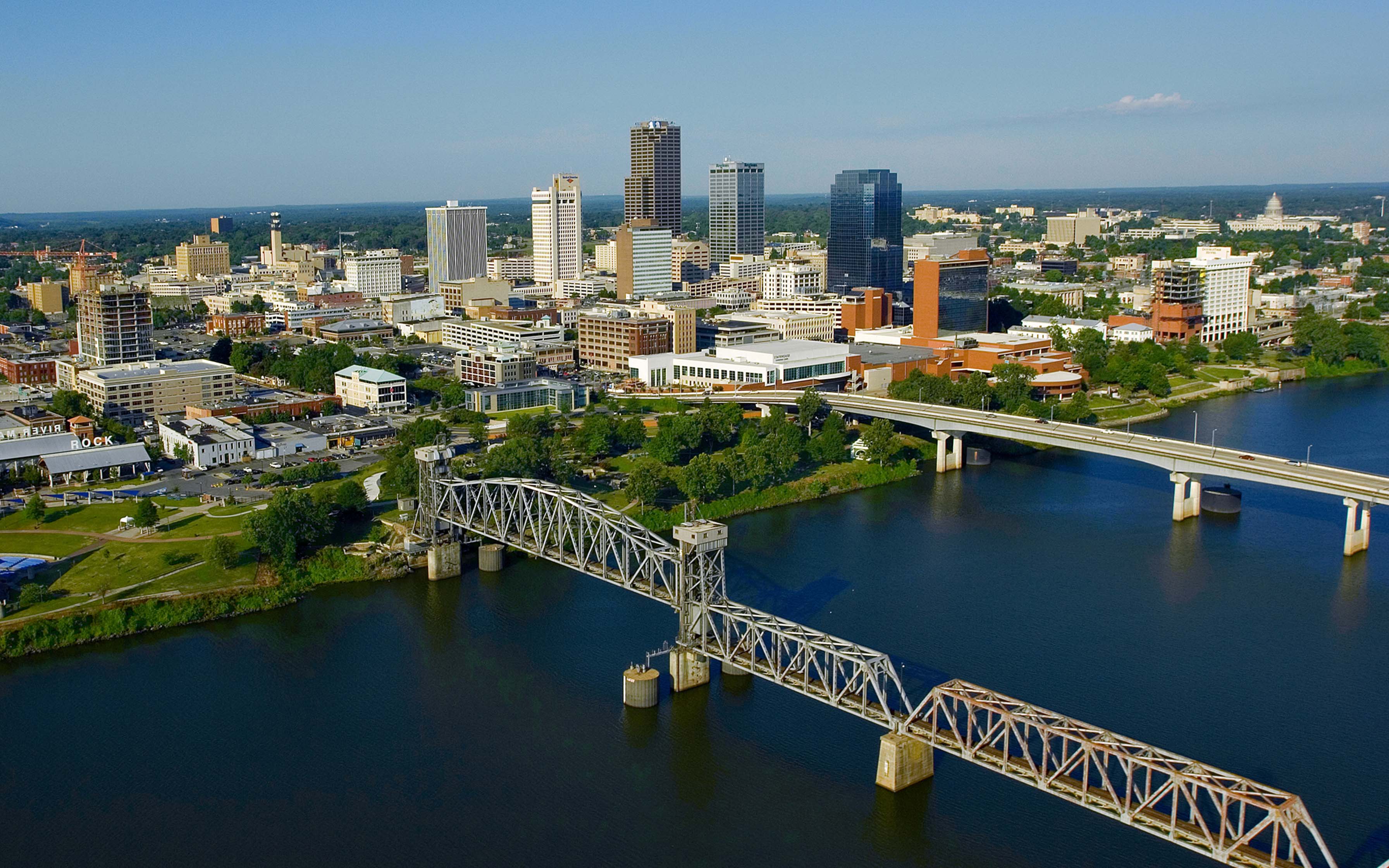Race issues improving, but hard work remains Seeing Little Rock in full color
November 18-24, 2019
By Dwain Hebda
Four bright-eyed teens line one side of a library table in arguably the most iconic address in Little Rock, Central High School. The kids – two black females, one white male and one white female – share snippets about their day, compare notes on teachers, talk about activities they have in common. It’s not a particularly revolutionary scene, except that it is. There was a time, a time painfully close, that such a group could not have sat peacefully here, did not know the same people, could not share jokes about a teacher. They are part of the Memory Project, a school initiative meant to teach young people the lessons of the past in order to forge a better future.
Of course, no extracurricular activity can by itself solve the seemingly eternal difficulties that dog efforts to bring equality and justice to all in the community or shake them free of its residue. None of the four kids live in the neighborhood surrounding Central, or in each other’s neighborhoods for that matter. When pressed, they admit to acting differently around teachers, police or other authority figures based on common or disparate race. Undeniably, the club is one of those things to feel optimistic about when it comes to race in Little Rock. But as one community leader after another pointed out, the true realization of Dr. Martin Luther King’s dream of joining hands across color, ethnic, political and religious lines is still just a beacon.
“There’s a constant tension between racism and anti-racism. A constant back and forth,” said Christina Shutt, director of the Mosaic Templars Cultural Center and Museum of African American History. “When we have anti-racist actions and the needle moves forward, racism finds a new way to move forward. This duty we have is to try to figure out how do we stop that; how we make the anti-racism go forward and leave the racism behind.”
Leaders such as Shutt point out it’s easy to feel good about the friendly tones and gestures we take with each other, except when that surface behavior keeps us from the messy and uncomfortable action needed to fundamentally change underlying institutional inequalities sprouting from the same bad seed. “Proximity is part of the issue,” Shutt said. “When you don’t live next door to people, when you don’t live in honest and real community with people, it makes a difference. It becomes really easy to be ‘othering’ them – ‘Oh, that’s those people over there.’
“It’s even in the way we talk about schools and neighborhoods where that’s a ‘good’ neighborhood and that’s a ‘bad’ neighborhood. Usually when people talk about good neighborhoods, good neighborhoods are described as being absent of people of color. So there’s all sort of coded ways we can sink in this kind of racist culture, ways that are very subtle.”
Preston Clegg, pastor of Second Baptist Church downtown, said some of these institutional issues aren’t even all that subtle. He bristles talking about the controversy involving Little Rock School District, at odds with the public and teachers unions over control and educational opportunity. “[That’s] the most obvious city issue to me, it’s a siren,” he said. “When you institute policies that have a disparate impact on one race, that is systemic racism in its very definition. For me, the last five years of the State Board of Education’s control of the school district, is a crystal-clear example of systemic racism at work.” Clegg has been publicly outspoken on such matters since arriving at Second Baptist in 2013 and even more so internally. He recently implemented Race in the Rock, a weekly speaker series, in the belief that change starts with understanding. It’s a simplistic concept that belies the complexity of the task. “Our church has been desegregated since 1957, if not before. But we’re still working on the integration part,” he said. “We’re asking questions of what a predominantly white church’s role is in the racial work of our day. What does that look like for us?
Second Baptist’s commitment to civil activism is one way Little Rock churches are choosing to break down barriers. Others, such as First United Methodist Church, interpret their charism through service, supporting a variety of ministries that seek to improve the lives of homeless, low-income and working poor, many of whom are people of color.
Pastor David Freeman said while all Christians are compelled by faith to serve their neighbor, some churches are better than others at living this out in a true Christlike manner. “In all of this, we want it to be relationship-driven and not simply this transactional, ‘Well, we’ve got all the resources and the power and we’re going to hand it out the way we can,’” he said. “Sometimes it feels like that in a food assistance ministry. So, we seek to develop relationships with people to humanize [the work], which I think spiritualizes it.” Freeman said addressing racial issues begins with each person understanding and reflecting on the societal and professional doors that are either opened or closed to them based upon their color of skin. He said First Methodist’s recent classes on the subject are designed to help congregants do just that. “These classes are a conversation about this broader undercurrent of race and the tension that is in our community,” he said. “And for this church, which is overwhelmingly predominantly white and overwhelmingly predominantly upper middle class, they’re having to get in touch with history and systems that they’ve been unaware of for a long time that have created this tension.”
Tamika Edwards, director of the Social Justice Institute at Philander Smith College, stands at a unique convergence of generations and attitudes. Raised in Little Rock, she’s a mother of two and interacts professionally with college students preparing to make their mark on the world. She said the challenge for the future is to not forget the lessons of the past. “I think what probably concerns me more than anything is that people do not fully know and understand history and how we got here,” she said. “It’s not even just about having conversations with people, but do we know our history? Do we know the truth of the history? Are we ready to confront the truth of our history and are we willing to do something about it? If we’re not going to do anything about it, it doesn’t matter how much you talk with people.”
Edwards said this lack of understanding is one reason people are so uncomfortable talking on the subject of race. But it goes deeper than that. “It’s about discomfort, fear, I don’t want to be blamed,” she said. “Nobody wants to be seen as a bad person. We know what racism has done to our country and nobody wants to be associated with that. It’s easier to just not deal with it, because once you deal with it, you have to change. If one says racism is still alive and well and yes, I benefit from that system, you then have to do something about it or know that when you don’t do something about it you contribute to it.”
It’s to the point of cliché to posit that much work remains to bring about true understanding in our community. It’s a simple fact that no one involved with this article, including the reader, is likely in this life to witness fully Psalms 85:11: Love and truth will meet; justice and peace will kiss. But the mere promise of that day is tantalizing enough to sustain those of all backgrounds and generations who work to achieve it.
Thoughts from four members of Little Rock Central High School’s Memory Project Initiative
“Ideally, you could just base it all on your personal relationships. But growing up in the U.S. and Arkansas, no less, it’s kind of ingrained in you, I guess. Treating people differently based on their race is kind of engrained because of how you grow up. That’s something you kind of have to unlearn.”
Milo Williams Thompson, Junior
“In my AP classroom, I’m really the only African American, or maybe one of only two or three. I will say sometimes it is uncomfortable because I feel like I have to meet a certain standard, so I won’t be viewed as, ‘Oh, OK, she’s black so she’s not going to do as well as me.’”
Trinity McIntosh, Senior
“My neighborhood is definitely not as diverse as Central. I think I act mostly the same in my neighborhood versus at school. It might just be that we’re not in school, but I might be a little more relaxed in my neighborhood [because] I can just go and not have to focus on my grades all the time so there’s less stress that way. But I don’t think that really affects the way I interact with the people around me.”
Danica Kelton, Junior
“Honestly, I think we approach people differently because the response may be different. Being a black girl, you’re told, ‘Well, don’t do that because you may scare your Caucasian counterparts.’ Like, when you get pulled over by the police, you have to show your hands, calm down, tell them what you’re doing, whereas if it’s a black cop you might not do that. It might be someone that I know or something. I don’t think we act the same with different races. I know I don’t, sometimes.”
Zaria Morris, Senior
PHOTO CAPTION: (All photos provided)
1. Left to right, Milo Williams Thompson, Trinity McIntosh, Zaria Morris, and Danica Kelton.
2. Left to right, Christina Shutt, director of the Mosaic Templars Cultural Center and Museum of African American History; Tamika Edwards,
director of the Social Justice Institute at Philander Smith College; Preston Clegg, pastor of Second Baptist Church downtown; and
David Freeman, Senior pastor of First United Methodist Church.
3. “When it comes to race, people must practice courage. If we’re ever going to get to a different place, we have to be honest with ourselves on what the issues are and have conversations so we can solve them,” said Tamika Edwards, director of the Social Justice Institute at hilander Smith College. This statement among others were discussed in a closer look at racial issues in Little Rock, Arkansas. (Source: Arkansas Department of Parks & Tourism)





